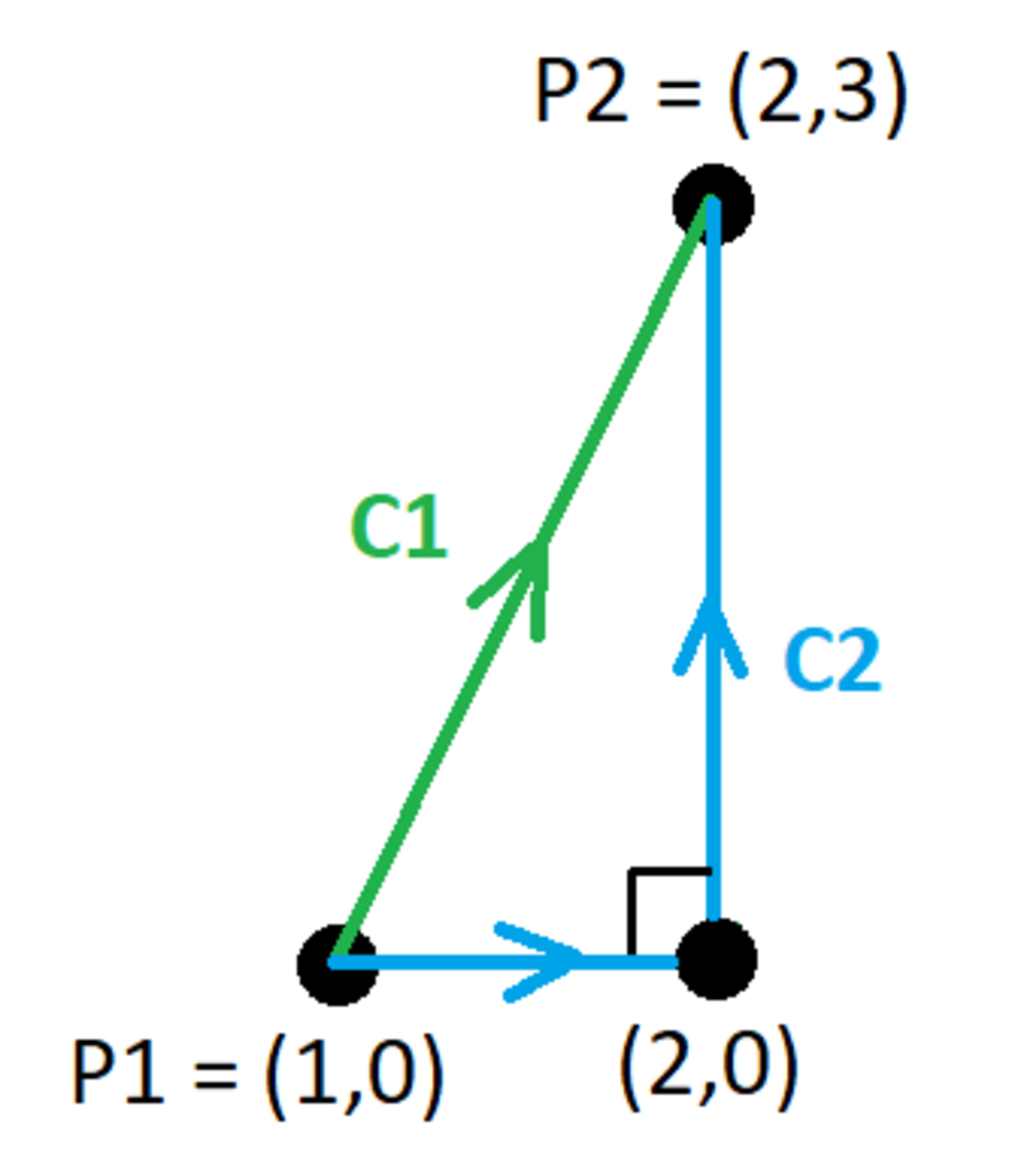Potentials Along Two Paths
A force field is described as follows:
F = x + y r ^
The attached diagram shows two paths from P 1 = ( 1 , 0 ) to P 2 = ( 2 , 3 ) . Define two potential differences:
Δ U 1 = ∫ C 1 F ⋅ d ℓ Δ U 2 = ∫ C 2 F ⋅ d ℓ
What is Δ U 2 Δ U 1 ?
Details and Assumptions
1)
r
=
(
x
,
y
)
.
r
^
is a unit-length version of
r
2)
Note that the coordinates of
P
1
have changed relative to the previous problem

The answer is 0.8439.
This section requires Javascript.
You are seeing this because something didn't load right. We suggest you, (a) try
refreshing the page, (b) enabling javascript if it is disabled on your browser and,
finally, (c)
loading the
non-javascript version of this page
. We're sorry about the hassle.
Line integral along C1:
C 1 : y = 3 ( x − 1 )
d l = ( i ^ + 3 j ) d x
F = ( x + y ) x 2 + y 2 x i ^ + y j ^ = ( 4 x − 3 ) x 2 + 9 ( x − 1 ) 2 x i ^ + 3 ( x − 1 ) j ^
I 1 = ∫ C 1 F ⋅ d l = ∫ 1 2 ( 4 x − 3 ) x 2 + 9 ( x − 1 ) 2 ( 1 0 x − 9 ) d x ≈ 0 . 9 4 8 7
Now, to evaluate the line integral along C2, which comprises of two branches:
Along the line y = 0 :
d l = d x i ^
F = ( x + y ) x 2 + y 2 x i ^ + y j ^ = x i ^
I 2 1 = ∫ y = 0 F ⋅ d l = ∫ 1 2 x d x = ln 2
Along the line x = 2 :
d l = d y j ^
F = ( x + y ) x 2 + y 2 x i ^ + y j ^ = ( 2 + y ) 4 + y 2 2 i ^ + y j ^
I 2 2 = ∫ x = 2 F ⋅ d l = ∫ 0 3 ( 2 + y ) 4 + y 2 y d y ≈ 0 . 4 3 1
The required answer is:
I 2 1 + I 2 2 I 1 ≈ 0 . 8 4 3 9